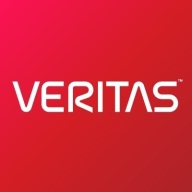

Microsoft DPM and Veritas NetBackup are competitive products in data protection and recovery. Veritas NetBackup seems to have the upper hand due to its advanced features and broader platform support, offering a more comprehensive solution.
Features: Microsoft DPM is highlighted for its robust integration with Microsoft workloads and its ability to manage backups within the Microsoft ecosystem efficiently. It supports application backup, file backup, system backup, and also offers seamless integration with Microsoft Systems like Exchange and SharePoint. It excels in ensuring compatibility and scalability, making it an effective tool for Microsoft-based environments. Veritas NetBackup offers broad platform support with advanced backup features such as deduplication, snapshot management, and cross-platform recovery, making it suitable for diverse IT environments. Its automatic image replication, media server deduplication, and cloud integration are notable for enhancing data protection and storage efficiency across multiple platforms.
Room for Improvement: Microsoft DPM could enhance its functionality for non-Microsoft environments and improve ARIA system stability, which has seen issues in recent updates. Expanding support for larger enterprise needs and offering better management features for mixed infrastructure would boost its appeal. Veritas NetBackup can work on simplifying its initial setup process to reduce deployment time. Improving its user interface for better accessibility and providing more frequent updates to its features could also add to its robustness. Additionally, addressing the complexities in troubleshooting could enhance the user experience.
Ease of Deployment and Customer Service: Microsoft DPM is known for its intuitive setup within the Microsoft environment, ensuring quick deployment for existing users of Microsoft technologies. Veritas NetBackup, despite requiring more setup time, provides extensive documentation and customer support for smooth integration. Its customer service is more beneficial for enterprises with complex IT environments, assisting in efficient multi-platform integration.
Pricing and ROI: Microsoft DPM offers competitive pricing, especially for businesses already within the Microsoft ecosystem, providing a cost-effective solution with straightforward licensing. Veritas NetBackup, with higher initial costs, justifies its expense through comprehensive features, justifying the investment with significant ROI potential for organizations needing extensive data management capabilities. Its ability to effectively handle multi-platform environments offers valuable long-term cost benefits, especially for larger enterprises.
It is suitable for our nature of business because data is very critical, and we cannot compromise on backup.
They provide professional services that are quite good and can meet your needs.
The support from Veritas NetBackup is very good.
The size of the catalog was an issue, but it was more about outgrowing our own architecture than a problem with Veritas NetBackup itself.
The product is very stable, rating between eight and nine out of ten.
In the last 10 years, I have never faced a single incident regarding stability with Veritas NetBackup.
Veritas NetBackup performs well in terms of stability.
The backup should have compression, deduplication, and DR replication.
Microsoft DPM could improve by adding S3 backup to S3 storage capabilities.
We would really appreciate if Veritas offers products by which we can secure our backups against these ransomware attacks.
Veritas NetBackup needs improvement in terms of integration with the cloud.
The pricing of Microsoft solutions rates in the middle range at five out of ten.
Microsoft licensing is complex, especially for enterprise or data center solutions.
The two-layer backup system is a particularly valuable feature in Microsoft DPM.
Microsoft DPM impacted my organization positively, and that was definitely possible.
One of the most effective features of Microsoft DPM is its integration with the entire Microsoft ecosystem.
Although we do not utilize its deduplication technology or cloud integration, we can trigger storage actions with NetBackup.
| Product | Market Share (%) |
|---|---|
| Veritas NetBackup | 2.7% |
| Microsoft DPM | 0.9% |
| Other | 96.4% |


| Company Size | Count |
|---|---|
| Small Business | 9 |
| Midsize Enterprise | 7 |
| Large Enterprise | 7 |
| Company Size | Count |
|---|---|
| Small Business | 32 |
| Midsize Enterprise | 21 |
| Large Enterprise | 65 |
Microsoft Data Protection Manager (DPM) is an enterprise backup system that can be used to back up data from a source location to a target secondary location. Microsoft DPM allows you to back up application data from Microsoft servers and workloads, and file data from servers and client computers. You can create full backups, incremental backups, differential backups, and bare-metal backups to completely restore a system. Microsoft DPM can store backup data to disks for short-term storage, to Azure Cloud for both for short-term and long-term storage off-premises, and to tapes for long-term storage, which can then be stored offsite. Backed up files are indexed, which allows you to easily search your recovered data.
Microsoft DPM contributes to your business continuity and disaster recovery strategy by facilitating the backup and recovery of enterprise data, ensuring resources are available and recoverable during planned and unplanned outages. When outages occur and source data is unavailable, you can use DPM to easily restore data to the original source or to an alternate location.
Key Features of Microsoft DPM:
Reviews from Real Users
Microsoft DPM stands out among its competitors for a number of reasons. Two major ones are its robust and flexible backup capabilities and its being easy to manage with one central dashboard.
William M., the head of ICT infrastructure & security at a tech services company, notes, "The automated procedure is quite good for us, as it is able to capture all of the information that we require. The compatibility is very good. We have an IBM AS/400 machine in our office that we're using, and we're able to back it up fine. This is the same for other systems, as well. I think that overall, it is really adaptable, compatible, and scalable."
Mohammed I., a managing director at Adalites, notes, "I would definitely recommend data protection DPM. It has an application backup, a file backup, a system backup and a hypervisor. It works flawlessly, never a problem."
Rodney C. a system analyst at a financial services firm, writes, "The most valuable feature is that DPM has an index so individual files can be searched. This is our primary tool for recovering deleted files or folders. Once we implement a System Center Operations Manager, all of our DPM servers can then be seen on one dashboard."
Veritas NetBackup is an enterprise-grade backup and recovery software solution. NetBackup securely restores and backs up files, raw partitions, and directories on a server known as a media server. A server protected by NetBackup is referred to as a NetBackup client. During the backup process, the NetBackup client sends the data through the network to the NetBackup media server, which chooses the appropriate storage media as the backup point.
Veritas NetBackup is a trusted enterprise backup solution that integrates with many of today’s popular databases, such as Microsoft SQL, Oracle, Linux, Unix, and Microsoft operating systems. The solution is able to backup data to tape, disc, and public clouds and keeps the popular Microsoft Hyper-V and VMware hypervisors safe and secure.
Veritas NetBackup Features
Reviews from Real Users
Mahdi B., Solution Architect and IT Consultant at Merdasco - Rayan Merdas Data Processing, says, “Veritas integrates well with the cloud, all databases, all operating systems, all hardware, and all software. Veritas also has solid malware and ransomware protection features. From time to time, we face a new kind of attack, and Veritas has always proven to be the best protection solution for some of my customers. Our customers who have faced ransomware attacks were able to recover their data in less than one day without any stress. Veritas is ransomware resilient and because of its implementation, it is not dependent on the operating system to work. Most of the functions of the Veritas software are isolated from the operating system and it's not dependent on the operating systems involved. This is very important. When some of our operating systems are infected by a virus, Veritas still works perfectly and protects our data. This feature is very well implemented in Veritas NetBackup.”
A PeerSpot user who is a General Manager at a comms service provider relates, “Veritas enterprise has many agents who perform the backup, whether it is a consistent backup or recorded backup. The solution has everything from the snapshot to the multiple database agents.”
Mir-Ali, Infrastructure Manager - Oracle SCM at a financial services firm, shares, “It covers all kinds of different architectures. Plus, it's very user-friendly and it is very reliable. Reliability is the most important thing because once the backup is done, if it is successful, then we're sure that it was successful and we will be able to restore it.”
We monitor all Backup and Recovery reviews to prevent fraudulent reviews and keep review quality high. We do not post reviews by company employees or direct competitors. We validate each review for authenticity via cross-reference with LinkedIn, and personal follow-up with the reviewer when necessary.